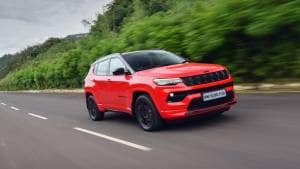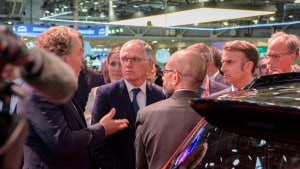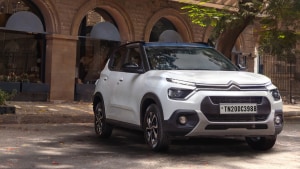Exclusive: Ambassador to return! Here's what Citroen's revival of the icon may look like
For well over the best part of five decades, the Hindustan Ambassador was very much a part of, and was reflective of, India's social fabric. Thus, when the production of the Ambassador ceased in 2014, a significant section of Indian society bade it a tearful goodbye, as did the likes of the BBC and several international media. Fans and admirers, as well as those that were not so fond of it, all thought it was the last that we would see of the "Grand Old Lady of Indian Motoring". Thus, there was considerable surprise when we received the news in 2017, that PSA Peugeot Citroen had acquired the Ambassador brand, for the rather astounding sum of Rs 80 crore!
The sum of 10 million euros, or 12 million in dollar terms, is easily three times what investors have been paying for great historical marques such as De Tomaso or Bertone. So why did the French automobile giant PSA Peugeot Citroen, splurge so much on brand Ambassador? Presumably, they see the intrinsic value in a brand, which not only epitomises an India of the past, but also an India of a future, which embraces its past, its immediate industrial history and yet wishes to furrow a tomorrow that is distinctively Indian in design, usage, comfort and robustness.
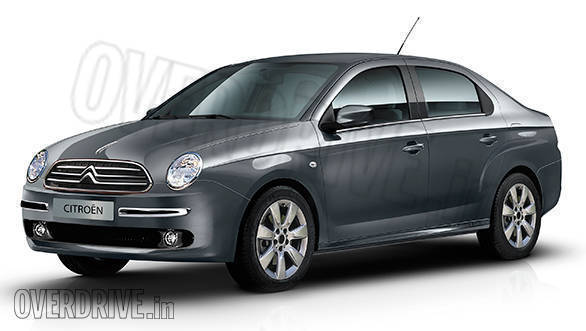
So, what could PSA be planning? Taking a leaf out of the success of the newer Minis and the Fiat 500 in Europe, PSA would do well to consider a modern Ambassador, one, which has not only the design cues and the virtues of space and comfort of the original Ambassador, but one which also captures the spirit of a bygone era. As it may not make economic sense to start with an all-new platform, it would be logical for PSA to use one of their existing models as the starting point. The ideal would be the Citroen C-Elysee, currently manufactured in both China and Spain, with the factory at Vigo (in Spain) supplying the European market. The C-Elysee is a mid-sized, front-wheel-drive saloon, based on the platform shared with the Peugeot 208 and the 301, and is a classical three-boxer, with dimensions very similar to that of the Ambassador.
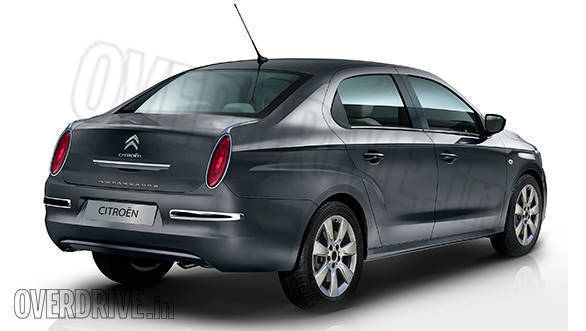
The C-Elysee is slightly longer and wider at 4.43 and 1.75 metres, as compared to the Ambassador's 4.33 and 1.66m. The wheelbase is longer too, with the C-Elysee's at 2.65 metres, compared to the Ambassador's 2.46. But that does not mean that the space inside will be more than that of the good ole Amby's, as thicker (but much safer) doors and a markedly lower roofline (1.48 metres versus 1.59 for the Ambassador) robs space from the cockpit area. Of course, the Citroen Ambassador will be much more refined, will handle very well and will be much safer and significantly more comfortable than the old warhorse, as it will carry over all the dynamic virtues of the very popular C-Elysee, which has been a very fine seller in China and Europe. In performance terms, we can expect it to be in another league altogether too, as compared to the Hindustan Ambassador, as it will be powered by a modern petrol engine, of either 1.2-litre (triple-cylinder) or a 1.6 four cylinder, developing between 72 and 115bhp, with a top speed of between 160 and 188kmph.
Will we Indians like it and take to it? And how does the idea of a thoroughly modern car with the charm of yesteryear specifically that of the soon-to-be-legendary Ambassador appeal to you?
About the Hindustan Ambassador
A few years before India's independence, barely five years before the Sun started setting on the British Empire, the patriarch of the Birla business family, Ghanshyam Das Birla, who was very close to Mahatma Gandhi and a great supporter of the Quit India movement, realised that there was considerable potential in setting up an automotive assembly plant near a port. In 1942, Hindustan Motors was incorporated in the tiny port town of Okha, in Gujarat. But the war and the consequent diversion of efforts into the production of war material had all the car majors of Europe and the United States busy Birla and Hindustan Motors had to wait.
With India's independence from British rule came the partition of the country into India and Pakistan. The partition of India caused the greatest transmigration in the history of humankind, and much bloodshed. It was only after things stabilised that the business of assembling automobiles was under consideration once again. Hindustan Motors migrated to West Bengal in 1948, and set up a factory in a town called Uttarpara, some 15 kilometres north of Calcutta.
Cleverly, Hindustan Motors signed two assembly deals, one with American carmaker Studebaker and the other with British manufacturer Morris Motors. The Studebakers though, in typical American fashion, were big six-cylinder-engine cars, expensive to buy and even more expensive to run. A smaller car, which would appeal to the emerging middle class, was what Hindustan Motors needed. As a complement to the Studebakers, Hindustan Motors tied-up with British carmaker Morris Motors, which had been selling its inexpensive "middle-class" models in India successfully.
Founded by William Morris in 1910 and headquartered in Oxford, the first Morris car was a two-seater buggy from 1913. Producing reliable cars at bargain prices, Morris became Britain's number one carmaker by 1925. After World War II, Morris re-introduced the Ten, a small car, which it had first launched in 1939. Hindustan Motors began its Morris assembly operations with the Ten, launched in India as the Hindustan 10, in 1949.
Shortly thereafter, in 1950, Hindustan replaced the 10 with the 'Baby' Hindustan, which was the recently unveiled Morris Minor, and complemented that with the slightly bigger Hindustan Fourteen (the Morris Oxford). The Morris Minor retailed for Rs 8,025 then. The Hindustan Fourteen went for Rs 10,085. Hindustan Motors also imported and sold the Morris Six an Oxford with a longer bonnet incorporating a bigger six-cylinder engine at a pricier Rs 13,325. In comparison, the Studebaker Champions, the Deluxe Sedan and the Regal Deluxe Sedan, both also assembled by Hindustan Motors, retailed for a relatively reasonable Rs 11,910 and Rs 12,210.
In 1954, the Hindustan Fourteen was replaced by the Hindustan Landmaster, which was the Morris Oxford Series II. The Landmaster remained in production until 1957, when the Ambassador replaced it. The Ambassador was the Morris Oxford Series III, launched in 1956 in the UK, though introduced in India only in 1957. In 1959, when the Oxford Series III was replaced by the all-new Farina-designed Series V, the tooling of the Series III was shipped to India and the Ambassador remained in production through the 1960s, the 1970s, the 1980s on and on, until 2014. A product life cycle of 57 years!

Contrary to what many believe, the Ambassador was not the longest-living model in series production: the Volkswagen Beetle Type 1, the original rear-engine model was in production for most of 65 years (production during WW II though was minimal). Neither was it the most numerous car made (just short of a million, compared to the Beetle Type 1's 21 million, and markedly fewer than India's "millionaire" cars, like the Maruti 800, Alto, Omni, Swift and Dzire, Hyundai Santro, i10, Mahindra Bolero, and several others). In its best years it sold just a tad over 25,000 units (25,440 in 1973 and 25,859 in 1989), and the worst was the last year of production, when in 2014, just 517 Ambassadors found buyers.
Yet there is no denying that the Ambassador was the backbone, the leitmotif, as well as the bete noir of the Indian automobile industry. It epitomised the worst of the Licence Raj, the stagnancy of Fabian socialism, and the weight and the negativity of non-progressive politics, as much as reflecting a symbol of power, safety, robustness and longevity. It outlived presidents, prime ministers and bureaucrats, and was the car of choice for touring the country, as well as the favourite of many luminaries from yesteryears, including filmmaker Satyajit Ray.
Words by Gautam Sen
Illustrations by Reboni Saha & Gautam Sen
Starts Rs 3.9 Lakhs
1086cc
Manual
59
84.33
-NA-
Starts Rs 7.98 Lakhs
1493cc
Manual
76
210
-NA-
